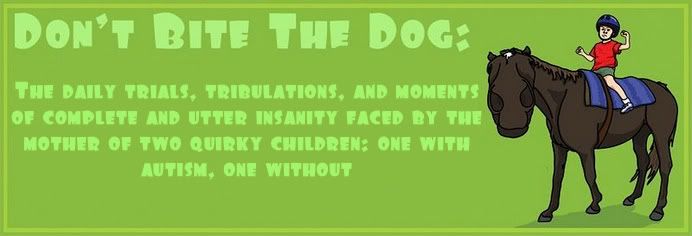GFCF Cooking Together: Learning Can be Fun!
AADigest Exclusive
Reprinted with permission from a 2011 column on “GFCF Cooking Together with Kids” offered by the Autism Asperger’s Digest magazine. This selection is featured in the July/August 2011 issue. Find previous GFCF Cooking Together articles at the Article Library page of the AADigest website, www.AutismDigest.com.
The kitchen is a natural learning environment. From organizing ingredients, to creating lists, and teaching basic math concepts, it’s not hard to imagine turning time spent cooking together into an incredibly fun learning experience.
Lay the Foundation
While any time spent cooking together can become a learning opportunity, do not introduce your child to cooking for the sole purpose of teaching. The key word is “fun!” Your child needs to be comfortable being together in the kitchen with you first, so if you haven’t begun the process, take steps to gradually introduce him to food, cooking, and sharing time in the kitchen. (Check out our earlier GFCF Cooking Together articles for some great tips!)
Don’t Forget the Food
It sounds silly to say “don’t forget the food,” but the point is simply this: There is no greater motivation to learn in the kitchen than for the end product to be the reward. This means making sure you choose foods your child loves to eat.
Basic Skills
One of the best things about using cooking to teach skills to our children with autism, is that it’s so easy to tailor the information and level of difficulty to meet their needs.
· Organization and Sequencing. Write each step of the recipe on a separate card, or list them on a dry erase board in simple terms so you and your child have a visual sequence of steps to follow. Make a list of ingredients and utensils you will need, then collect them and organize everything on the counter in the order in which it will be used. The extent of your child’s participation depends entirely on her ability and comfort level in the kitchen. If necessary, begin by asking her to find just one utensil and make it her “assigned” utensil. For example, her utensil could be a spoon and when that step is reached in the recipe, she has responsibility for stirring. Put a star next to the steps that she will complete.
· Sharing Together. This is a great time to implement strategies like turn taking and synchronizing actions together. Examples might be: “I’ll pour this, then you’ll pour that,” “I’ll get the mixing bowl, you get the spoon,” or “I’ll add eggs while you stir.”
· Verbal Communication. Keep a happy, chatty conversation going, even if you’re delivering a monologue. Remember that the idea is for you to model the steps and teach while you’re in the cooking process, whether your child is watching or actively participating. Every now and then ask a simple question and give him sufficient time to respond.
· Descriptive Language. While you’re talking, use as much descriptive language as possible to define colors, textures, tastes, and smell. Pause to let her experience and absorb the similarities and differences in ingredients.
Math in the Kitchen
Could there be a better place to teach essential math than the kitchen? This is the perfect opportunity to give real-world substance to abstract concepts. Depending on your child’s academic level, you can work fractions, measurements, addition, subtraction, multiplication, division, and even weight (if you have a kitchen scale) into any simple recipe.
· Counting. Count the number of times you stir, every time you add an ingredient, the number of steps in the recipe, the number of ingredients, etc. Make it a game by taking turns counting or by pretending you can’t remember the next number so your child can pitch in and help.
· Double the Recipe. Create the opportunity to teach addition or multiplication by doubling the recipe. Your child can count out loud, and physically measure and pour each ingredient twice, which gives you multiples chances to reinforce the concept. Make it more complicated by increasing the recipe by 1 1/2.
· Reduce the Recipe. On the flip side, teach subtraction or division by cutting the recipe in half.
· Fractions. Measure one cup of flour (or other ingredient), then measure again using half cup, third cup, and quarter cup measures. Talk about how they’re different. Demonstrate that you can pour two half-cup measures into one cup to equal the same amount. Another great visual method is to choose a food item that your child likes, whether several carrots or slices of bread, then lay one item out whole, cut another one in half and place it under the whole one, cut another one in thirds and place it directly underneath, etc.
TIP: You’ll need more than one set of measuring cups to show the relationships. You’ll need two half cups, three third cups, and four quarter cups.
Shapes, Sorting and Fine Motor Skills
Scholastic.com had a great lesson plan for teaching shapes and sorting. Complete directions can be found by going to their web site and searching for “fruit-shape kebabs,” but here’s the idea:
· Cut different fruits into shapes. Use any type of fresh or canned fruit and cut each one into a variety of shapes. For optimum sorting, you’ll need enough of the fruit to cut each one into the same shapes. Ultimately, the fruit will be made into kebabs, so plan to have enough pieces cut to make several kebabs.
· Sort by type of fruit. Talk about their different colors, textures, tastes and uses in cooking.
· Sort by shape. This gives you the opportunity to teach different shapes. You can also compare the cut shapes to the original shape of the fruit.
· Separate the fruit into piles. Decide how many kebabs you’re making and create a pile of fruit for each one. Count as you divide the fruit into separate piles.
· Slide each pile of fruit onto a bamboo skewer to make kebabs. Be careful about safety issues if the skewers have sharp points, but if it’s appropriate for your child, placing fruit on the skewer helps fine motor skills.
· Enjoy the snack! Serve with a GFCF yogurt for dipping, sprinkled with some raw sugar on top. De-licious!
Spending time in the kitchen together offers all sorts of opportunities for learning, from academics like math, history (origins of food), or geography (when using ethnic foods), to working on sensory issues or social skills. The key here – and everywhere – is to make learning fun for the child!
Read More Online! Our companion e-article (available only to subscribers during July & August) focuses on converting recipes to GFCF. Plus, look for a delicious, nutritious warm-weather recipe to try out with your child. www.AutismDigest.com
----------------------------------------------------------------------------------
Copyright © 2011 Autism Asperger’s Digest. All Rights Reserved.








1 comment:
HI Amber! Just wanted to drop you a note and say that I really enjoy reading about Jaymes, Sienna and the rest of the family on your blog! I hope by now Jaymes is okay being away from camp- after all its only 51 weeks of home and then a week of camp!
If you guys ever need any resources or a place to hang out, feel free to say hello on our facebook page: http://www.facebook.com/rethinkautism !
And btw- what did you end up cooking? :)
Post a Comment